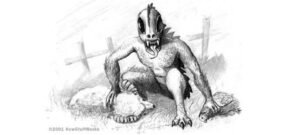National Symbols of Costa Rica
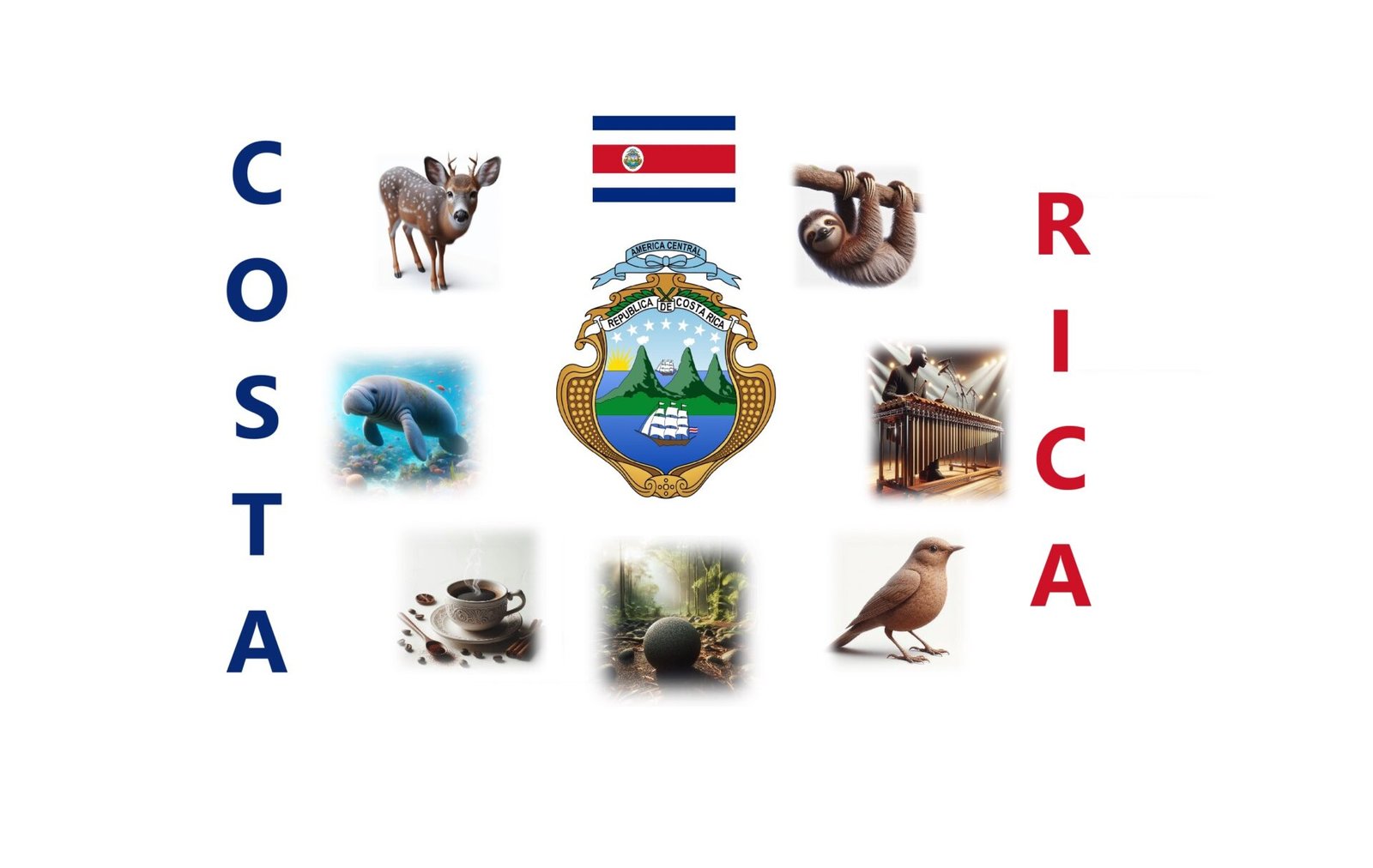
Costa Rica features a wide range of official national symbols. Most people recognize the flag and coat of arms, but many others remain lesser known. Some of the country’s official animals might surprise you—they aren’t always the ones you’d expect. These symbols reflect Costa Rica’s deep connection to nature, culture, and history. From birds and flowers to musical instruments and ancient artifacts, each one tells a unique story. Let’s explore the diverse and often unexpected national symbols that help define Costa Rica’s vibrant identity.
THE FOUR NATIONAL ANIMALS
#1 – LAND ANIMAL
Tapir? Jaguar? Howler monkey? Not quite. Costa Rica’s official land animal is the White-tailed Deer, declared a national symbol in 1995. Once on the brink of local extinction due to hunting and habitat loss, this graceful creature has made a comeback thanks to conservation efforts.
The White-tailed Deer (Odocoileus virginianus) ranges from Canada to the Amazon, adapting to diverse ecosystems across the Americas. Though regional subspecies exist, they all belong to the same interbreeding species. In Costa Rica, you’ll most often spot them in Guanacaste and Puntarenas, especially in protected areas like Santa Rosa National Park.
They’re agile, social, and surprisingly fast—reaching speeds up to 56 km/h. Their signature white tail acts as a warning flag to others when danger approaches. Despite their quiet presence, they play a vital role in maintaining healthy ecosystems by grazing on grasses and shrubs.

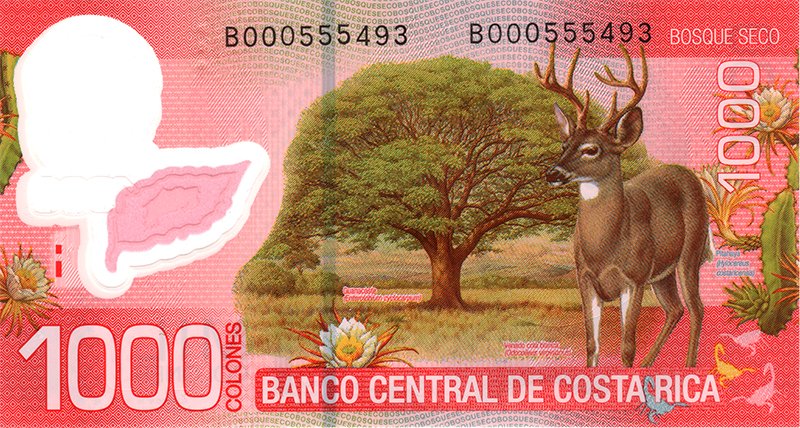
#2 – BIRD
Toucan? Scarlet Macaw? Quetzal? Not quite. Costa Rica’s national bird is the modest Yigüirro—the Clay-colored Thrush. Named the official bird in 1977, it doesn’t dazzle with bright feathers or rare sightings. Instead, it wins hearts with its song.
The Yigüirro sings just before the rainy season begins, a sound many Costa Ricans associate with renewal and planting. Its melodic call carries through gardens, parks, and neighborhoods, making it a familiar voice across the country. Because it lives close to people, nearly everyone knows its tune—even if they don’t know its name.
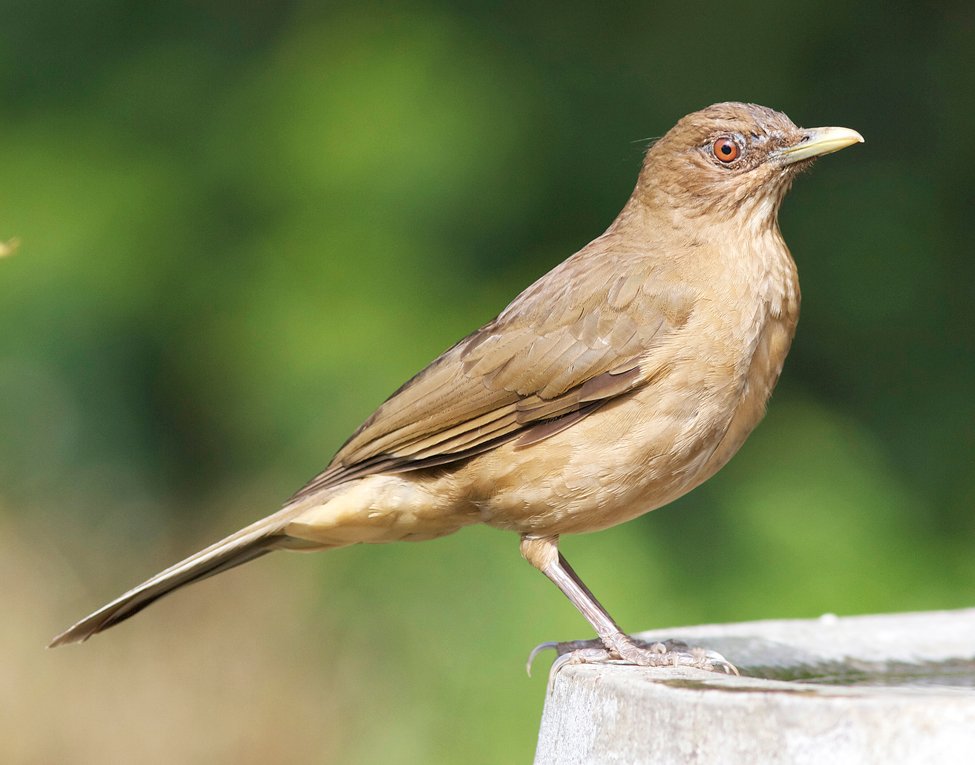
#3 – MARINE ANIMAL
A marine animal deserves just as much spotlight as its land-based cousins. So, did Costa Rica choose a whale, dolphin, or sea turtle to represent its rich ocean life? Not quite. In 2014, the country crowned the gentle Manatee—also known as the Sea Cow—as its official marine animal.
This slow-moving herbivore belongs to the North American Manatee species and frequents the Caribbean coast, especially in places like Tortuguero and Barra del Colorado. Adults typically reach 3.5 meters (12 feet) in length and weigh around 600 kg (1,200 lbs), though some giants tip the scales at over 1,700 kg.
Manatees glide through brackish waters, feeding on aquatic plants and surfacing every 15 minutes to breathe. Their paddle-shaped tails and rounded bodies may have inspired ancient mermaid myths—especially among weary sailors. Fittingly, their scientific order is Sirenia, a nod to those legendary sea maidens.
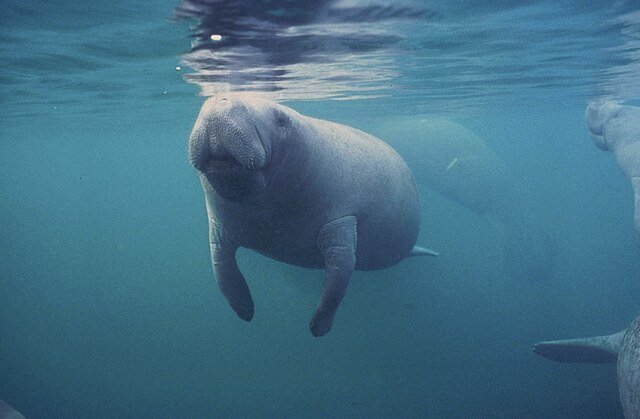
#4 – ONE MORE!
The sloth finally claimed its rightful place among Costa Rica’s national symbols in 2021, becoming the newest member of the official list. Long adored by locals and tourists, sloths have quietly represented the country’s laid-back spirit for years. With their slow movements, gentle nature, and wide-eyed charm, they’ve become unofficial mascots of the Pura Vida lifestyle.
Costa Rica is home to two native species—the two-fingered Hoffmann’s sloth and the three-fingered Brown-throated sloth. You’ll find them in rainforests across the country, from the Caribbean lowlands to the Pacific coast. Their popularity has helped raise awareness about forest conservation and the importance of protecting biological corridors. We have written an id-depth article about local Sloths here: Sloths of Costa Rica
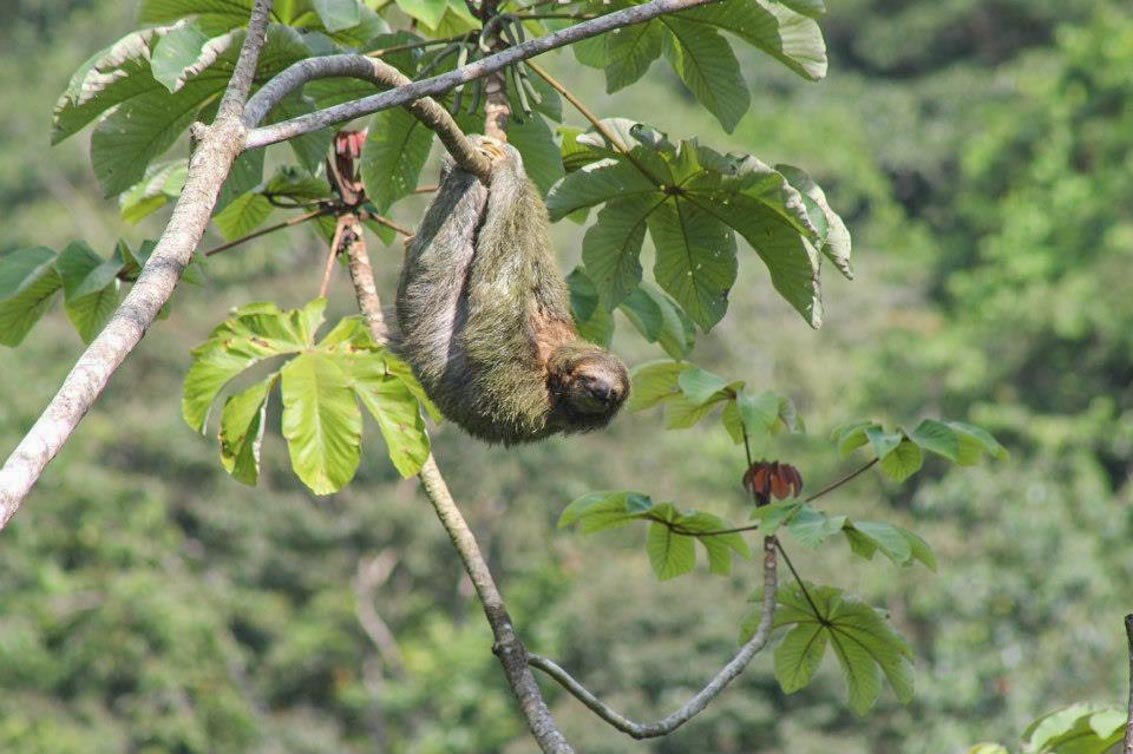


NATIONAL FLOWER
he radiant Guaria Morada orchid has held the title of Costa Rica’s national flower since 1939. Blooming high in the forest canopy between January and March, it paints the landscape with vibrant shades of violet and lavender. Locals cherish its arrival as a sign of renewal and celebration.
Farmers often say its beauty mirrors the grace of Costa Rican women, while folklore links the flower to peace, love, hope, and good fortune. Many believe it strengthens family bonds and brings harmony to the home. With deep roots in indigenous tradition and colonial admiration, the Guaria Morada isn’t just a flower—it’s a symbol of Costa Rica’s soul.

NATIONAL TREE
The Guanacaste tree stands tall across Costa Rica’s landscapes, offering shade and symbolism in equal measure. Its name comes from the Nahuatl words quautl (tree) and nacaztli (ear), a nod to its ear-shaped seedpods that curl like glossy brown shells. Locals often call it the “tree with ears,” and once you see the pods, the name makes perfect sense.
In 1959, Costa Rica declared the Guanacaste tree its national tree. The decision honored both the province of Guanacaste—where the tree thrives—and the historic annexation of the region in 1824. With its massive canopy and fern-like leaves, the tree provides vital shade in dry regions and serves as a gathering place for people and wildlife alike.
Beyond its beauty, the Guanacaste tree plays a key ecological role. Its pods feed parrots, monkeys, and cattle, while its wood supports rural construction
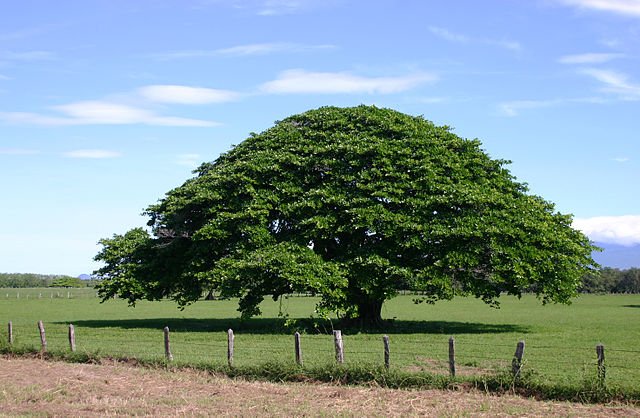

STONE SPHERES
We wrote an article about the Spheres Park and Stone Spheres – it provides very interesting tidbits of information about these mysterious objects. The Diquis people began shaping stone spheres around 600 AD, using rocks to pound boulders into round forms and polish them with sand. You can find them across the Diquis Delta and on Caño Island, ranging from a few centimetres to over two metres wide.
Researchers have documented more than 300 spheres in Costa Rica, though collectors and institutions relocated many to museums, parks, and universities. Only a small number still sit where the Diquis originally placed them, scattered across the landscape like echoes of ancient craftsmanship.
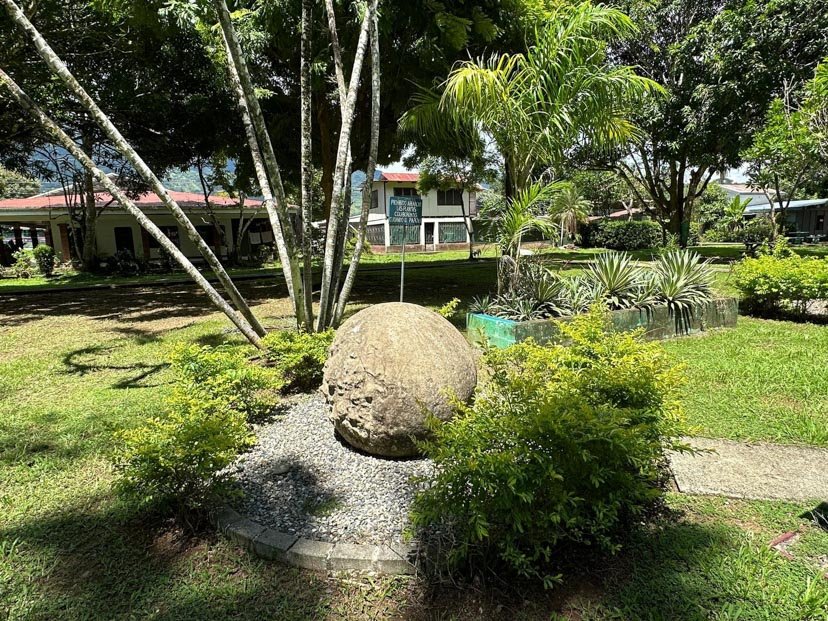
A couple of theories exist about the purpose of the spheres. Some say the spheres marked paths to the homes of Chiefs, or mapped stars and planets, or guided travelers across the land. Others suggest alien origins or links to Atlantis, adding mystery to their already enigmatic presence in the region. One legend claims the Diquis brewed a potion that softened stone, making carving effortless and precise.
The Diquis vanished soon after the Spanish arrived, leaving behind questions we may never fully answer. In 2014, Costa Rica declared the spheres a national symbol, honoring their cultural and historical significance. That same year, UNESCO recognized a nearby archaeological site, protecting the spheres as part of world heritage.
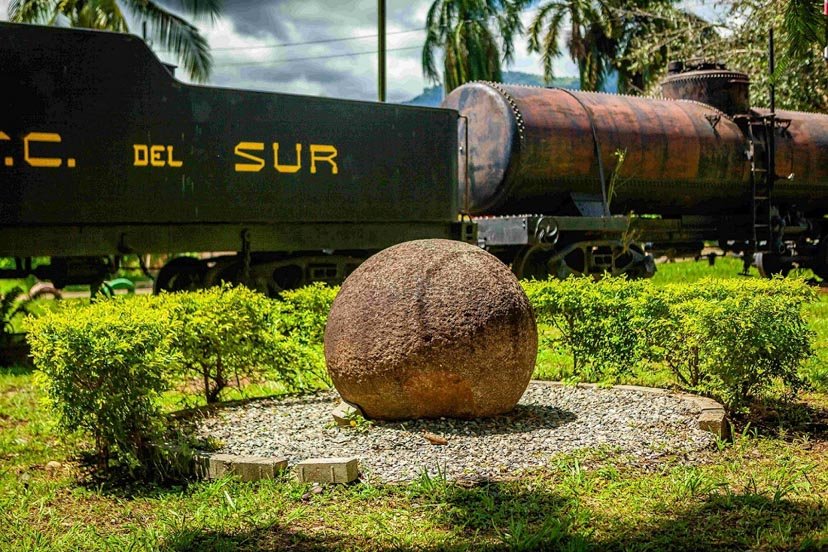
NATIONAL THEATRE OF COSTA RICA
Built in 1897, this neoclassical gem stands as Costa Rica’s most celebrated building, admired far beyond the streets of San José.
Italian marble wraps its exterior in elegance, while the interior dazzles with ornate detail and world-class performances. Statues of Calderón de la Barca and Beethoven grace the front, while Chopin and others line the walkway and theatre halls.
Goethe’s Faust opened the stage, setting a high bar for the cultural legacy that followed. Though nearly 130 years old, the theatre earned national symbol status only in 2014, solidifying its place in Costa Rican heritage.
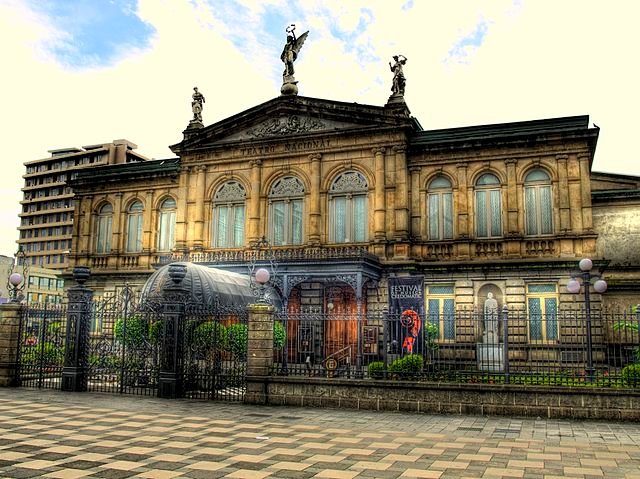
Costa Rica’s coffee boom fueled the rise of the National Theatre, funded entirely by a special tax on coffee exports. Back then, San José counted fewer than 20,000 residents, making this grand structure a bold and ambitious statement. Locals saw it as a symbol of cultural pride, proof that even a small capital could dream on a European scale.
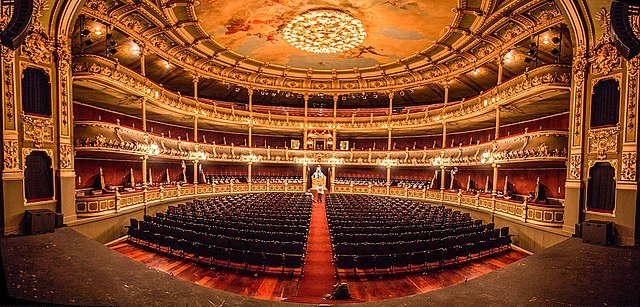
Today, the theatre holds several performances each week and is home to the National Symphonic Orchestra. it has also become a tourist attraction in its own right.
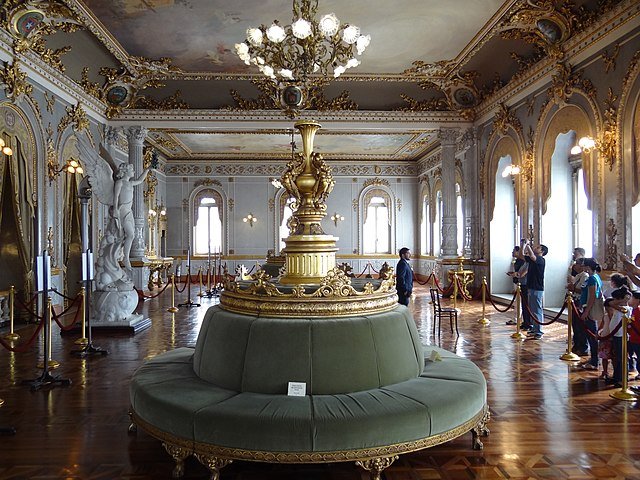
THE MARIMBA
Costa Ricans cherish the marimba, a wooden percussion instrument played by striking bars with mallets to create warm, rhythmic melodies. It arrived in the late 1700s during colonial times and quickly rooted itself in Guanacaste and the Central Valley’s musical traditions.
Communities embraced its sound, weaving it into festivals, dances, and everyday life across generations. The Church of Orosi holds Costa Rica’s oldest marimba recording, made in 1785 and preserved as a cultural treasure. Today, the marimba remains a symbol of joy, heritage, and regional pride throughout the country.
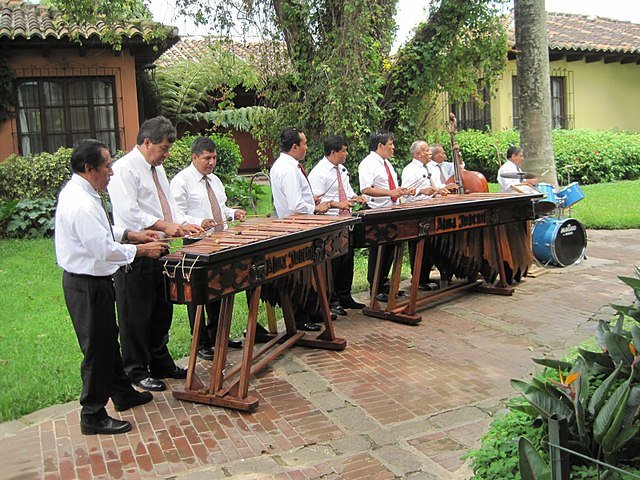
The marimba plays a central role in Costa Rican folklore, echoing through religious festivals, civic celebrations, and historical traditions. Musicians often pair it with guitar, quijongo, tambourine, cowbells, and other percussion to create a joyful, vibrant ensemble. Its sound invites dancing, laughter, and connection, filling plazas and homes with rhythm and warmth. In 1996, Costa Rica officially named the marimba its national musical instrument, honoring its deep cultural roots and enduring popularity.
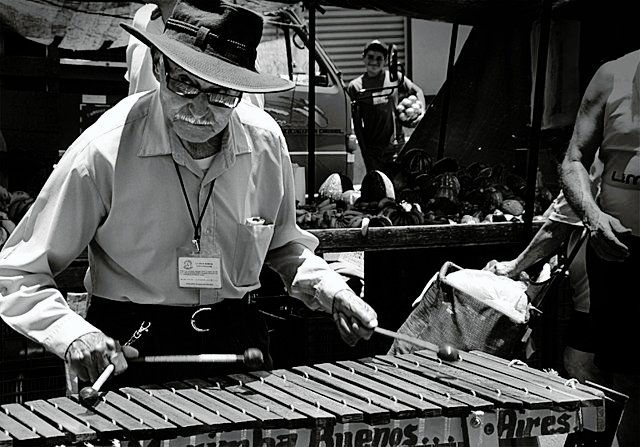
COFFEE
Coffee and Costa Rica share a deep bond, rooted in rich soil, high altitudes, and generations of careful cultivation. Local beans rank among the world’s finest, praised for their flavor, sustainability, and distinct growing regions like Tarrazú. Starbucks features Tarrazú Geisha as its priciest brew, offered in just 48 select locations across the globe. Elegant packaging and global prestige make Costa Rican coffee a treasured gift, both practical and symbolic. In 2020, Costa Rica officially named coffee a national symbol, honoring its legacy and cultural importance.
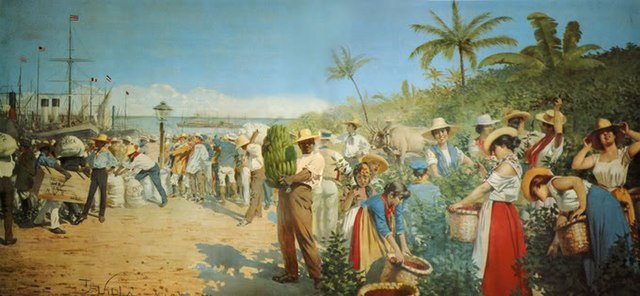
Costa Rica’s coffee story began in 1779, when farmers planted Ethiopian beans across the country’s fertile hills and valleys. The climate proved ideal, and the government distributed land to boost production and encourage economic growth. By the 1830s, coffee had overtaken cocoa, tobacco, and sugar, becoming the nation’s most valuable crop.
Coffee wealth reshaped Costa Rica, funding infrastructure, education, and a rising standard of living for many families.
Parents sent their children to study in Europe, investing in knowledge and culture through the fruits of the coffee trade.

Costa Rica now contributes about 1% of the world’s coffee, with exports topping $300 million annually and growing steadily. Global demand for premium, sustainable beans continues to rise, keeping Costa Rica’s coffee legacy vibrant and economically vital. Producers focus on quality over quantity, cultivating distinct regional profiles that attract connoisseurs and ethical buyers worldwide. The journey that began in 1779 is far from over—Costa Rican coffee still fuels dreams, livelihoods, and global admiration.
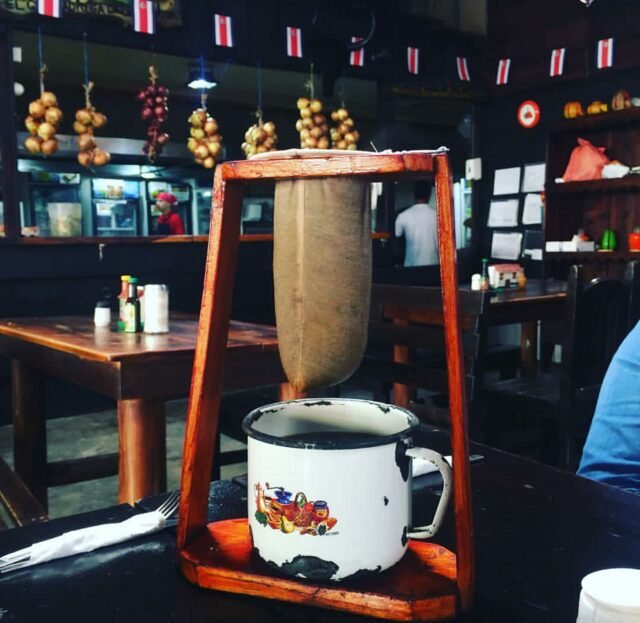
THE CRESTONES
These magnificent and breathtaking rock formations, said to be named after their resemblance of rooster crests, have been named a national symbol of Costa Rica in 2011. Straddling Mount Chirripó 3,700 meters or 12,200 feet above sea level the Crestones attract hikers and nature enthusiasts from around the world. Protected as a part of Chirripó National Park and the UNESCO World Heritage Site umbrella, these natural wonders are embedded in an area treasured for its beauty and biodiversity.
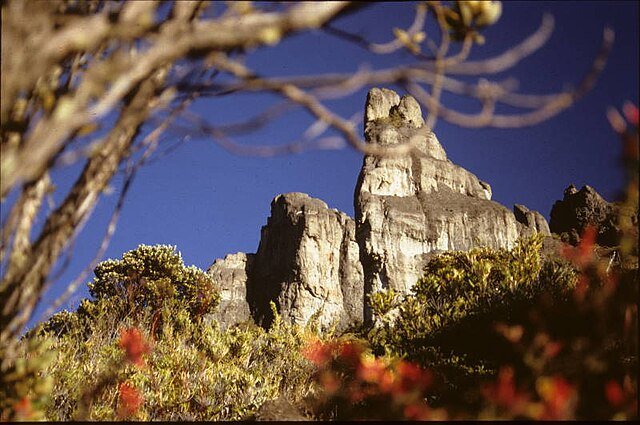
THE OXCART
Our recent Oxcart article dives into the history and significance of this vital & revered mode of transport. The Costa Rican Oxcart, or Carreta, rose from its humble beginnings in the early 1800s to become one of the most striking and recognizable symbols of the country. In 2005 it was granted the coveted ‘Intangible Cultural Heritage‘ status by UNESCO, and in 1998 it became the national labor symbol of Costa Rica. Every bit of Costa Rican heritage is woven into the Oxcart – the country’s topography, agriculture, demographics, roads, weather, commerce, and art & cultural expression have all left their mark on the revered Carreta – a vehicle which has evolved to create a cozy niche within the landscape of Costa Rica.
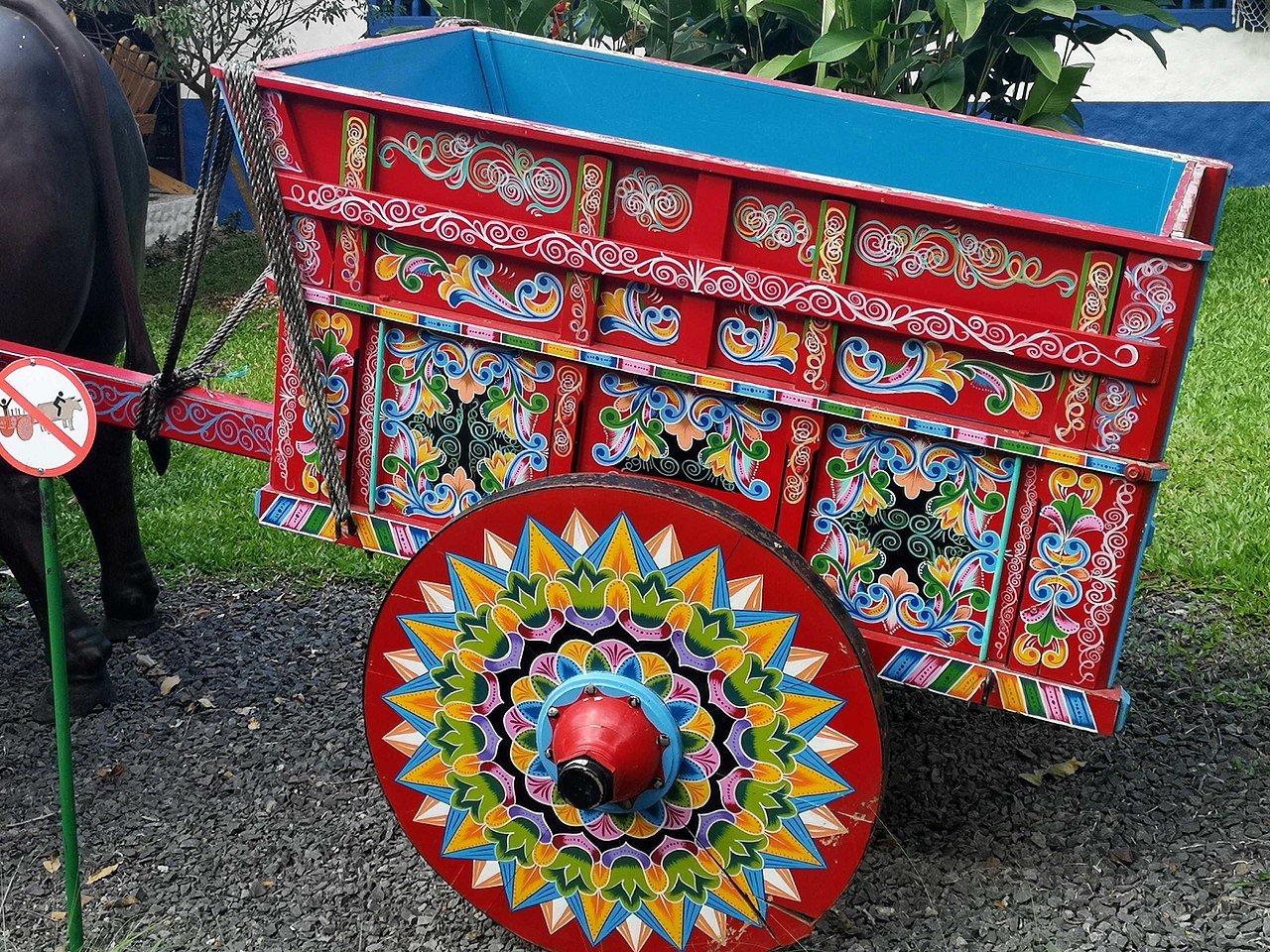
The tradition of painting the Oxcarts was born in the early 1900s. It is said that a local craftsman, Joaquin Chaverry, used the Oxcart to take his family on Sunday drives. He wanted his family to travel in style so he started to decorate the Oxcart in various designs. As orange was the only paint available in the town, those designs were originally made in orange – and even to this day the color orange is the predominant color to be associated with the Costa Rican Oxcarts. In the past, and even today, the Oxcart is a symbol of skill, wealth and status – the more intricate, colorful and striking the design, the greater the apparent wealth and well-being of the family.
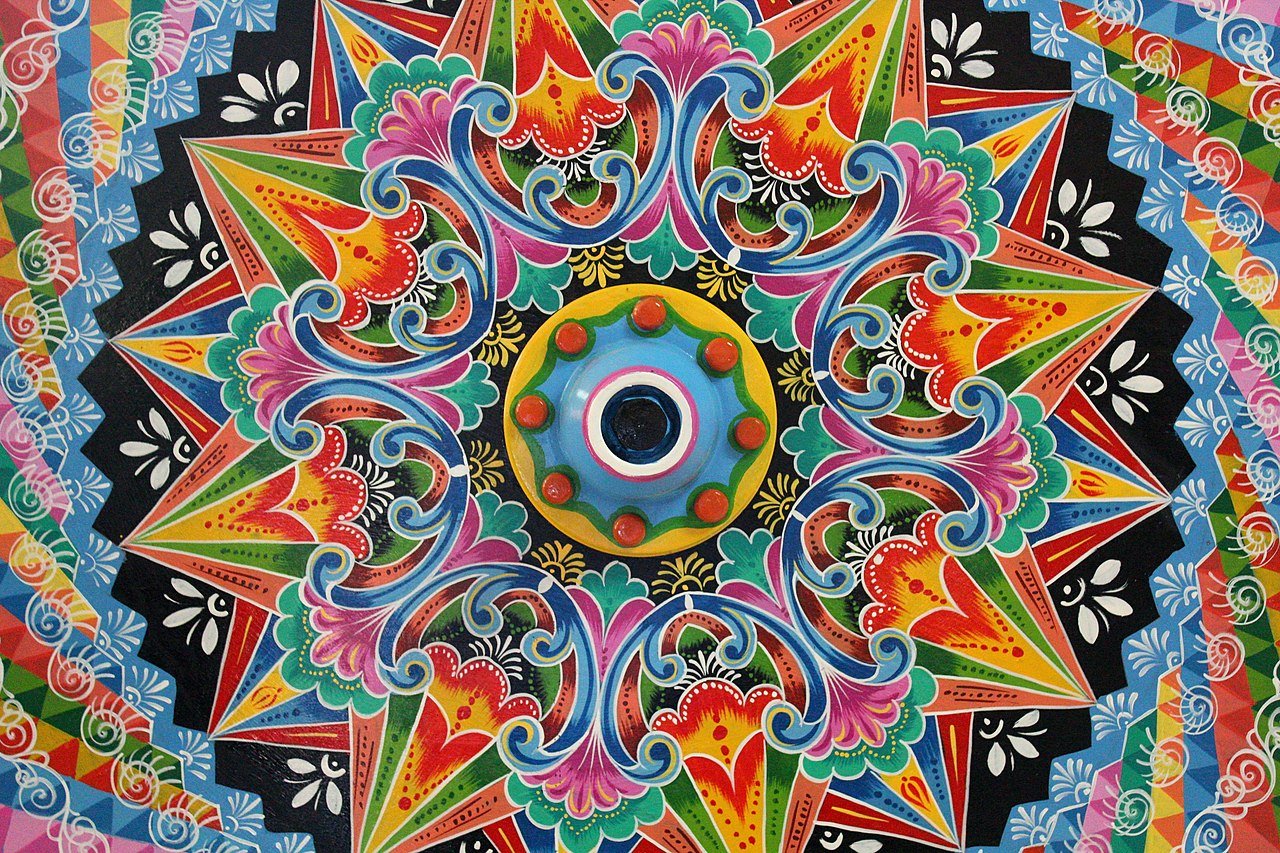
INDEPENDENCE TORCH
The Independence Torch is a beloved symbol of Costa Rica, making an appearance during the annual Independence Day celebrations. Costa Rica gained independence, from the Spanish Crown, on September 15 1821. Messengers carried the news, on foot, from Guatemala, through Honduras, El Salvador, Nicaragua, finally reaching Costa Rica with the amazing news – and all those countries also gained independence on that same day.
Today, the torch makes the same journey – being passed relay-style as it travels from Guatemala to Costa Rica, being cheered on along the way. And in 2005 the Independence Torch was declared as a national symbol of Costa Rica.
NATIONAL FLAG
Costa Rica’s state flag has its beginning in 1848, selected some time following the break-up of the United Provinces of Central America. It was designed by Pacífica Fernández, the wife of President José María Castro Madriz, and was officially adopted on September 29, 1848. The colors reflect the values of the 1848 French Revolution (freedom, equality, brotherhood) and so the flag borrows France’s colors of red, blue and white:
BLUE represents the sky, intellect, religious & spiritual ideals, and perseverance.
WHITE represents happiness, wisdom, and clear thinking.
RED represents the bloodshed for freedom, the warmth of the Costa Rican people, and their love of life. It represents the sun casting first rays of Costa Rica’s true independence.
The National Flag is plain while the State Flag, below, includes the coat of arms.

NATIONAL COAT OF ARMS
The current Costa Rican Coat of Arms goes back to 1848, just like the National Flag, to the time of the Dr Jose Maria Castro Madriz presidency. The design of the Coat of Arms is attributed to the president’s wife, Pacifica Fernandez. Some changes were made since then – the elimination of military symbols, national flags and horn of plenty in 1906, addition of two stars in 1964 (taking the total from 5 to 7 to recognize each province by its own star ), and addition of smoke to the volcanoes in 1998. c/o wikicommons.
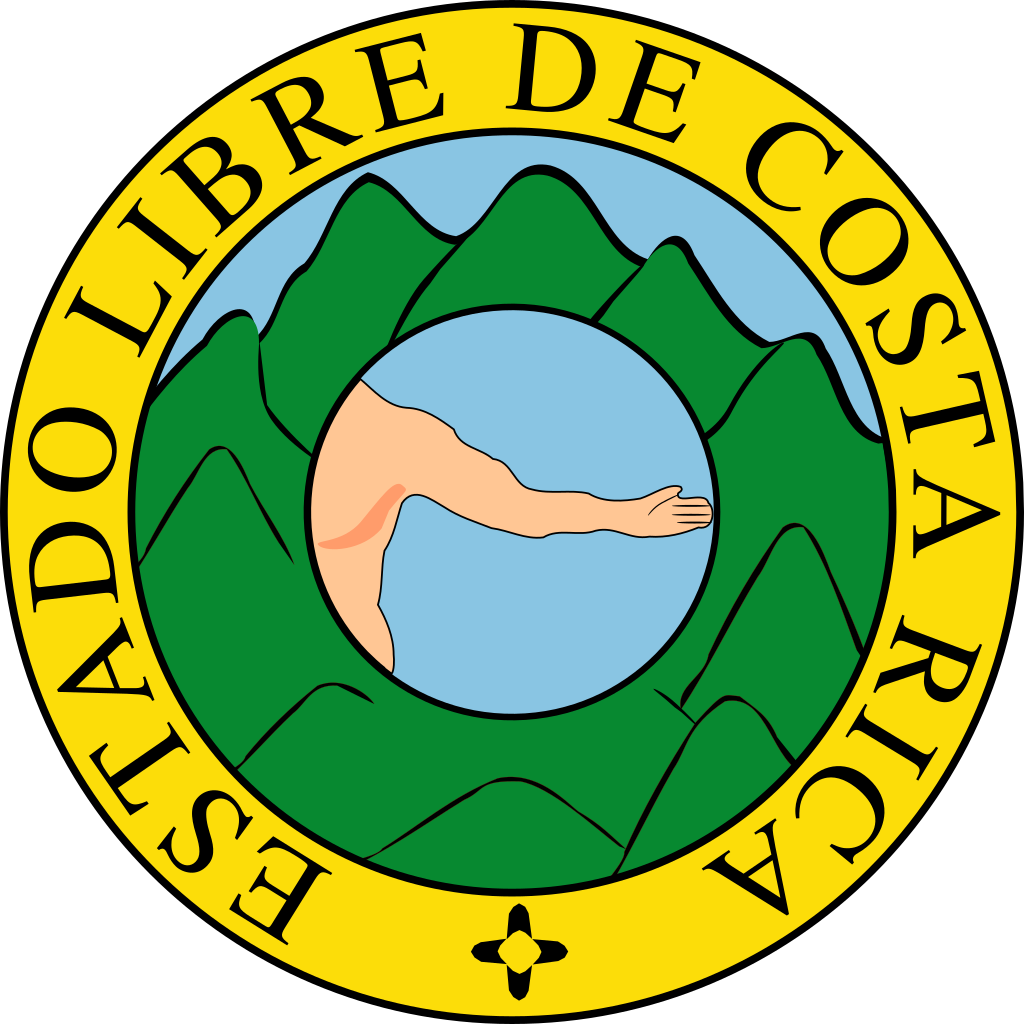
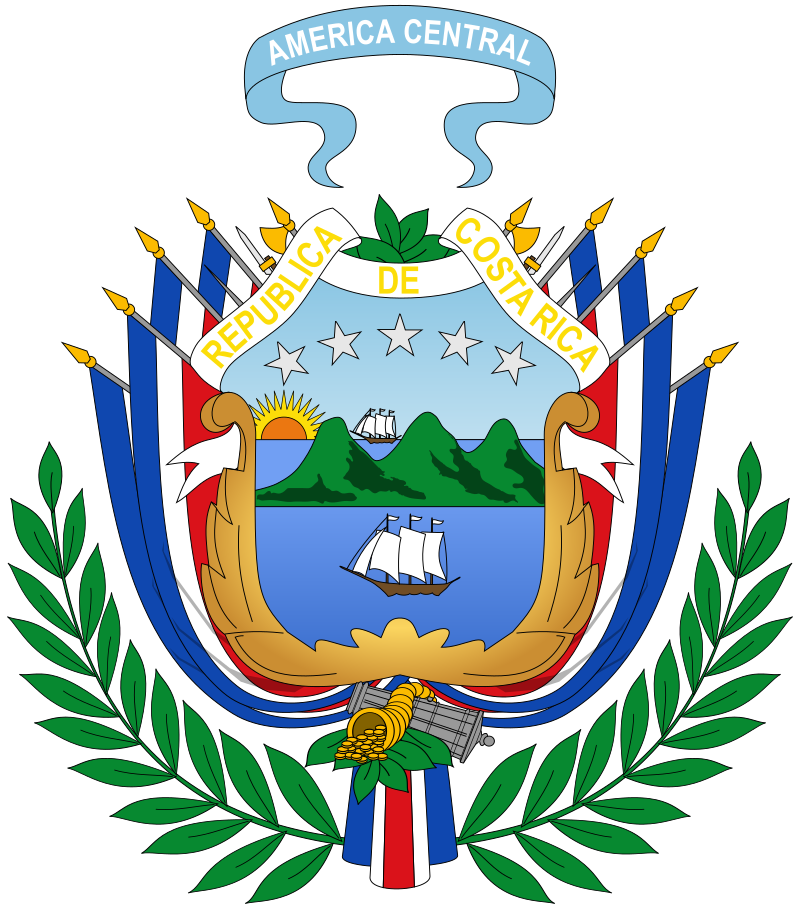
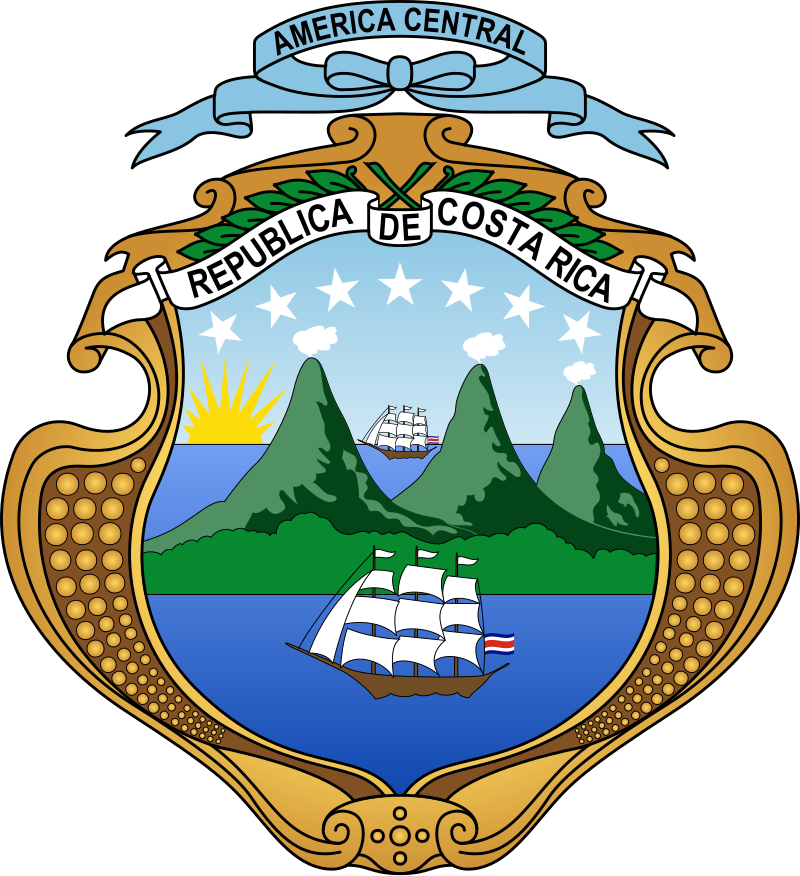
NATIONAL ANTHEM
The National Anthem of Costa Rica was declared a national symbol in 1949, an event that marked the teaching of the anthem becoming mandatory. The anthem is also known by its first lines, “Noble fatherland, your beautiful flag” or “Noble patria, tu hermosa bandera“. The Costa Rican anthem was the first Central American anthem, with its current lyrics being composed in 1903.
The director of the Costa Rican Military Band, Manuel María Gutiérrez, was tasked with composing the anthem. He did so in a few days in his home in San Jose – initially he held a lot of trepidation as he had no experience and little time but, in the end, he came through.
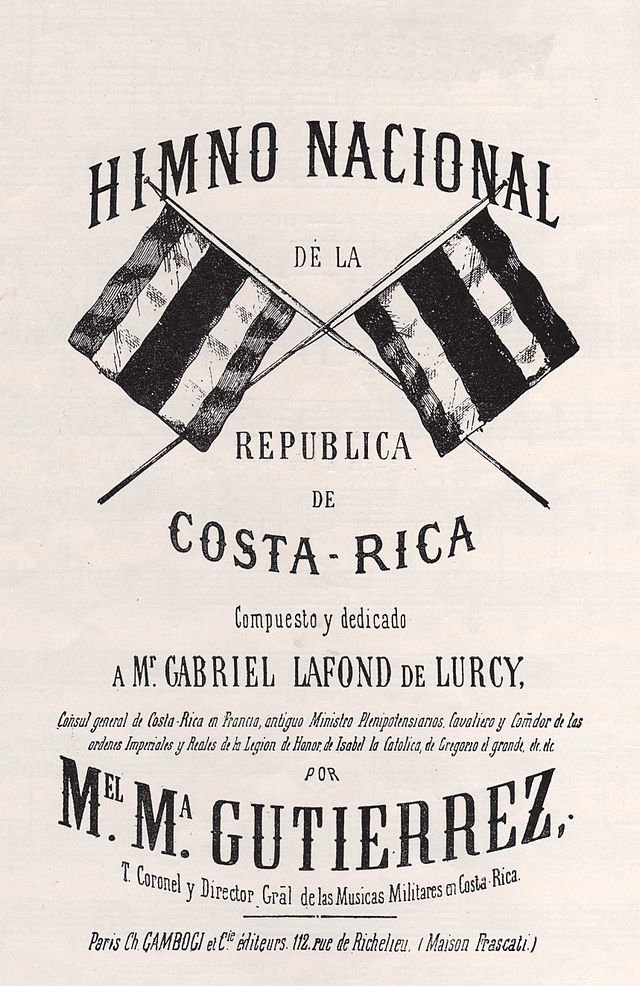
Noble fatherland! Your beautiful flag
shows us the expression of your life;
under the limpid blue of your sky,
white and pure, rests peace.
In the tenacious struggle, of fecund labour,
that reddens the man’s face;
your children, simple farmhands, conquered
eternal prestige, esteem and honour.
Hail, oh gentle land!
Hail, oh mother of love!
When someone intends to tarnish your glory,
you will see your people, brave and virile,
the rustic tool into a weapon transform.
Hail, oh fatherland! Your prodigal soil
gives us sweet warmth and sustenance;
under the limpid blue of your sky,
may work and peace always live!



